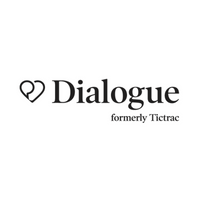How effective communications can support organisational resilience during times of change

During the past few years, employees and employers alike, have been trying to find ways to successfully weather the storm, bounce back from adversity, or face emerging challenges with grit.
Change has been constant for everyone over the past few years. Many organisations are currently working through their thinking in terms of building a resilient workforce for the longer term. During our work with employers, designing wellbeing strategies, we have identified three key components to consider when looking to build a resilient organisation and teams for longer term success:
1. Empowering employees to self-educate
Provide your employees with a place to go to educate and focus on their own holistic wellbeing across the four pillars of financial, physical, mental and emotional wellbeing. Taking a holistic approach will give your employees the tools and resources to contribute to building their own resilience- especially as there is interconnectedness between the four pillars of wellbeing.
Introducing a two-way aspect to the wellbeing programme, for example taking part in group challenges, helps employees feel a sense of connection to their colleagues in a world where many are feeling socially isolated and/or are working remotely for the majority of the week.
2. Proactively promoting relevant topics to employees
Employers tend to have a good understanding of their employee population and organisational wellbeing focus areas. To proactively promote relevant topics, appropriate outreach communications are important to support employees, signpost to relevant resources and build that ongoing engagement. A campaign-led model will help support the design, development and execution of appropriate communications tailored to your workforce’s health and wellbeing requirements.
3. Employer level data, analytics and actionable insights
By using data and insights from a wellbeing platform, employers have the opportunity for earlier identification of emerging trends amongst their workforce to help inform any future health and wellbeing campaigns and initiatives. For example, data can show topical wellbeing areas across the workforce and preferred channels of engagement. Over time the data and insights can help employers to build a more detailed picture of their workforce.
One additional point to note, a campaign-led model and wellbeing strategy, is not a one-size-fits-all approach. Our work with employers begins with clearly understanding the organisational challenges and culture, demographics of the workforce and any existing wellbeing insights. It is also important to give consideration to any employer or employee factors which may play into ensuring the strategy, communications and campaigns are designed in a way that is inclusive for all employees.
The importance of raising awareness of health and wellbeing topics in the workplace is likely to continue to grow as the World Health Organization (WHO) recognises the workplace as one of the primary settings for health promotion in the 21st Century.
By building a strong culture of wellbeing through ongoing communication and engagement, employers will likely start to see the resilience of their organisations increase. Additional benefits which may be noticed include a reduction in absenteeism and presenteeism across the workforce and, more importantly, a happier, healthier and more resilient workforce.
An increased level of resilience helps organisations and employees survive and hopefully thrive during the ongoing times of change.
This article is provided by Tictrac.
Supplied by REBA Associate Member, Dialogue formerly Tictrac
We're an employee wellbeing platform dedicated to helping employees live healthier lives.







